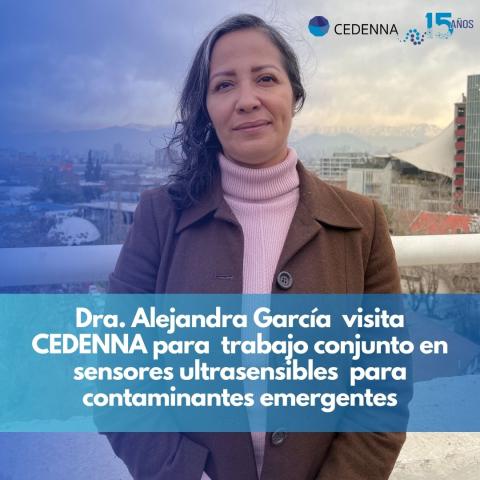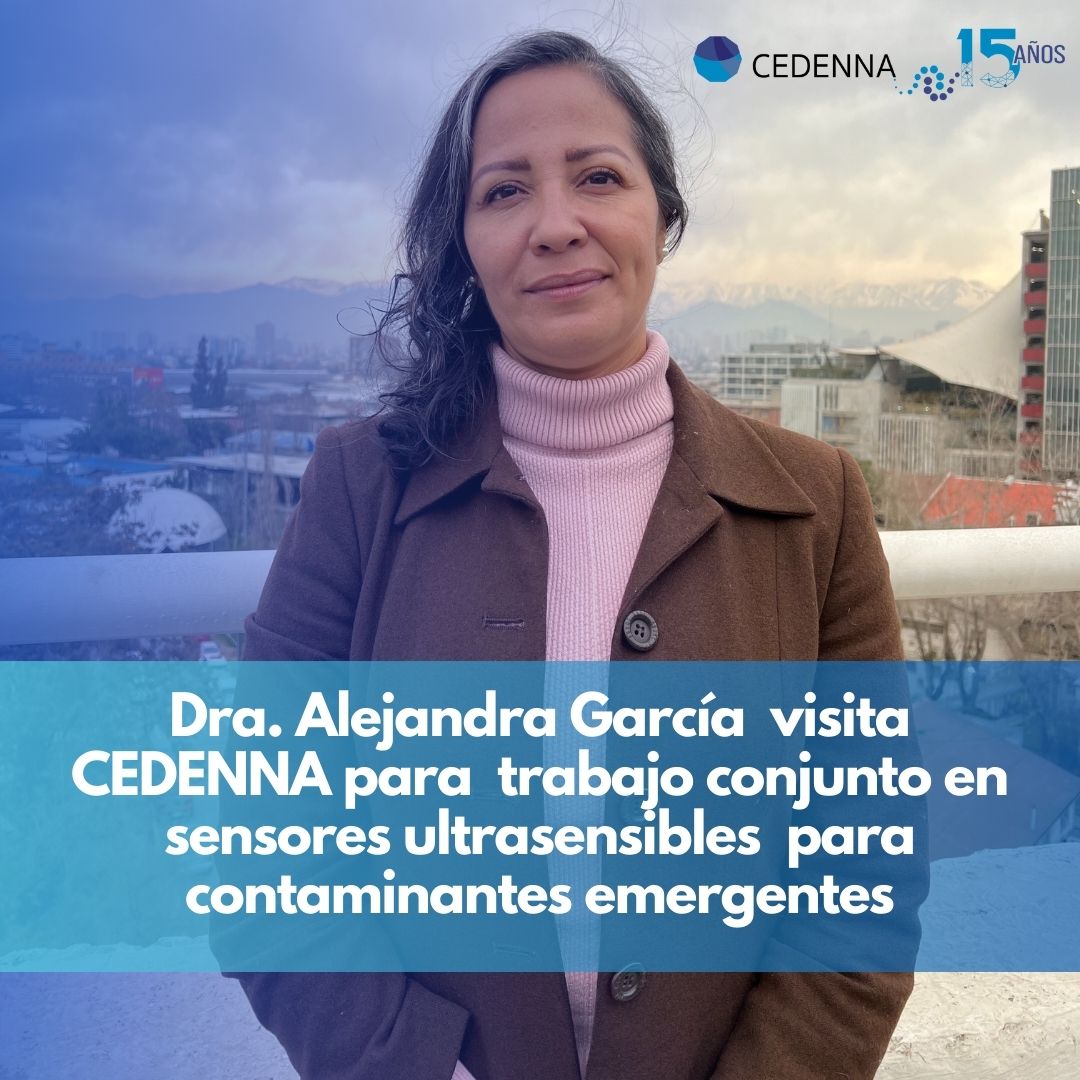
The head researcher at the Advanced Materials Research Center (CIMAV) of Mexico, Dr. Alejandra García García, will be carrying out activities and work days at the Center for Nanoscience and Nanotechnology (CEDENNA) until August 11. This, with the aim of sharing experiences and advances around the modification of nanomaterials that can be used to detect emerging contaminants, raise awareness and contribute to the generation of regulations.
The Mexican scientist is currently working on modifying the properties of materials such as carbon nanotubes, graphene and reduced graphene oxide through doping techniques. These modifications alter the electronic structure of the materials, making them more electron-rich and useful in highly sensitive detection of emerging contaminants, a growing concern for the future.
Precisely to continue advancing in their work, they need to know what is happening at the atomic level, “how the detectors and sensors work… which atoms are joining which atoms of the sensor in order to be identified, for example.” And to answer these questions, there are no experimental tools, which is why it is key to work through simulations. That is where CEDENNA comes in through a group of theoretical researchers specialized in this area.
This joint work is very relevant in a planetary scenario increasingly affected by pollution. “Our research can contribute above all to raising awareness and trying to promote the establishment of rules that do not exist today. For example, there are no regulations for emerging contaminants,” he points out with concern.
He comments that countries like India and China face bigger problems, while nations like Mexico and Chile are not yet at that level, but they can go there, especially if there are no regulations, public policies in which science and the State come together. .
One of the emerging contaminants that researchers are studying is PFAS, an acronym that refers to perfluoroalkylated and polyfluoroalkylated substances and encompasses a family of chemical compounds widely used in various industries due to their unique properties of resistance to water, oil and to the heat. These compounds are commonly found in everyday products such as nonstick cookware, Teflon, food packaging, stain-resistant textiles, and firefighting foams. However, its persistence in the environment and potential adverse effects on human health have generated concern and drawn the attention of regulatory bodies worldwide.
“I don't know if you heard recently that they tried to take Teflon off the market. That's a type of PFAS. However, there are thousands of PFAS and we live with them every day. The United States launched an alert and last year already said that it did not want more PFAS: but of course, the contamination is already there. So, that is precisely where the importance of demonstrating the damage arises, raising awareness in time and establishing rules and forcing industries to reduce this type of pollution.”
“That is why it is essential to create much more sensitive sensors that detect lower levels to alert and demonstrate at the nanomolar, centomolar, etc. level. We have to lower the levels as much as possible and that is the work we are doing,” he points out.
A frontier collaboration
Dr. Samuel Baltazar, researcher at CEDENNA's Magnetic Nanostructures Line, highlights the importance of these international collaborations. He specifies that “these interactions not only allow resources and knowledge to be shared, but also enrich perspectives and solutions to common problems.”
The researcher highlights that CEDENNA is permanently focused on generating international networks in scientific research, since sharing research and experiences with experts from other countries enriches projects and opens new opportunities for innovation.
This collaboration between CIMAV and CEDENNA promises to provide innovative and effective solutions to urgent environmental problems, highlighting the crucial role of science and international cooperation in moving towards a more sustainable future.

- Log in to post comments







